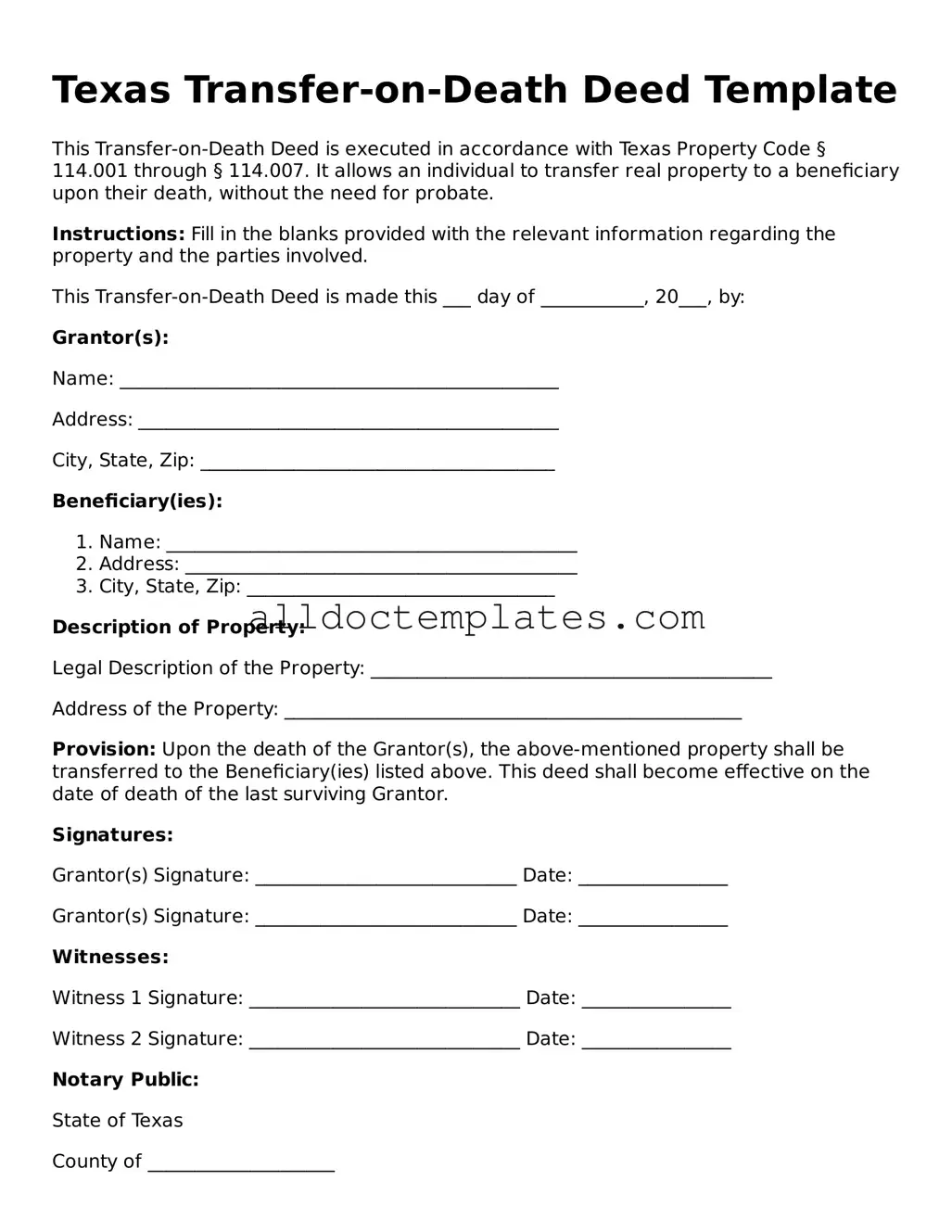Texas Transfer-on-Death Deed Template
This Transfer-on-Death Deed is executed in accordance with Texas Property Code § 114.001 through § 114.007. It allows an individual to transfer real property to a beneficiary upon their death, without the need for probate.
Instructions: Fill in the blanks provided with the relevant information regarding the property and the parties involved.
This Transfer-on-Death Deed is made this ___ day of ___________, 20___, by:
Grantor(s):
Name: _______________________________________________
Address: _____________________________________________
City, State, Zip: ______________________________________
Beneficiary(ies):
- Name: ____________________________________________
- Address: __________________________________________
- City, State, Zip: _________________________________
Description of Property:
Legal Description of the Property: ___________________________________________
Address of the Property: _________________________________________________
Provision: Upon the death of the Grantor(s), the above-mentioned property shall be transferred to the Beneficiary(ies) listed above. This deed shall become effective on the date of death of the last surviving Grantor.
Signatures:
Grantor(s) Signature: ____________________________ Date: ________________
Grantor(s) Signature: ____________________________ Date: ________________
Witnesses:
Witness 1 Signature: _____________________________ Date: ________________
Witness 2 Signature: _____________________________ Date: ________________
Notary Public:
State of Texas
County of ____________________
Subscribed and sworn to before me on this ___ day of ___________, 20___.
Notary Public Signature: ____________________________________
My commission expires: ____________________________
This Transfer-on-Death Deed must be recorded in the county where the property is located to be effective. It is recommended to discuss this deed with an attorney for legal advice specific to your circumstances.
